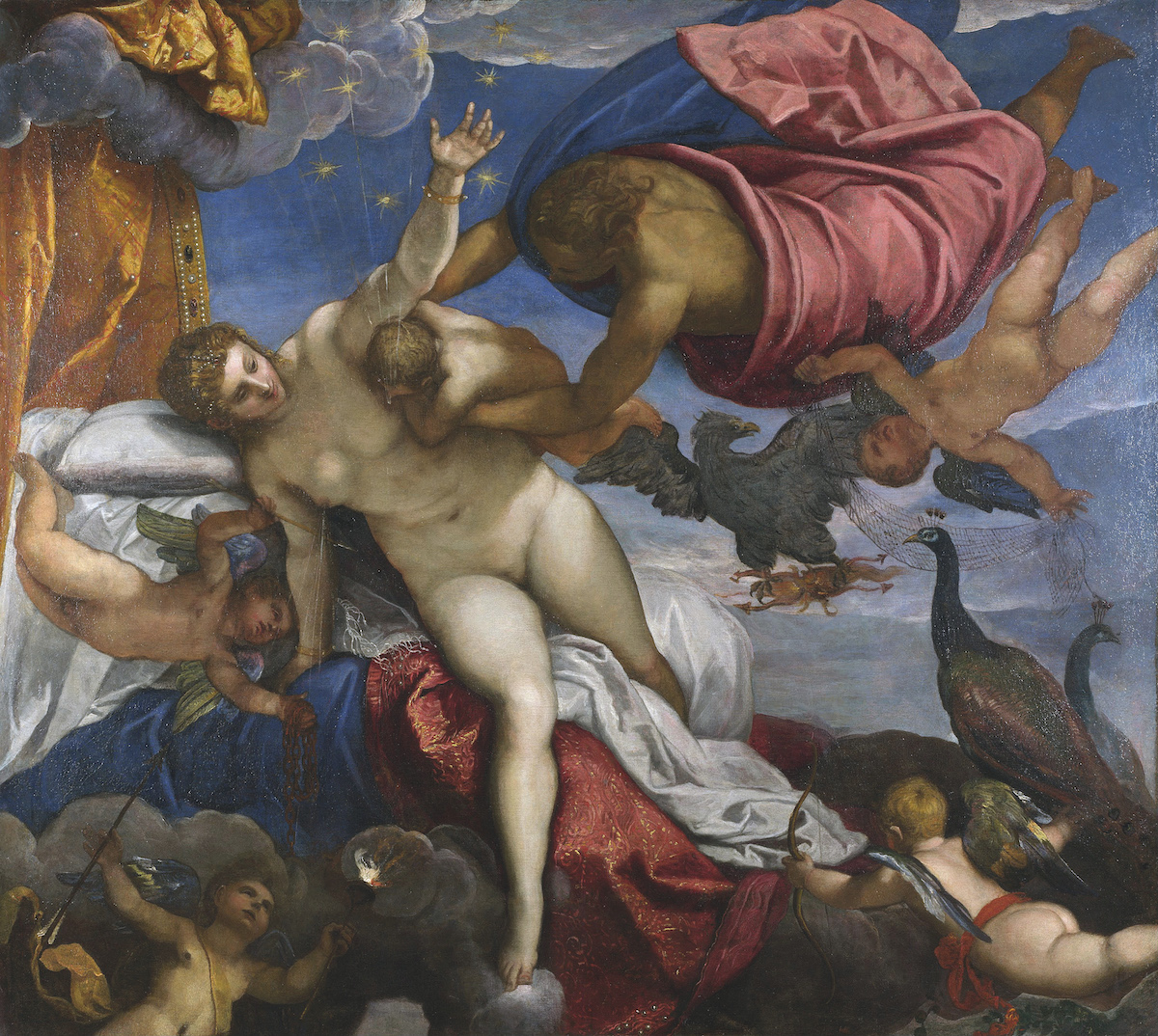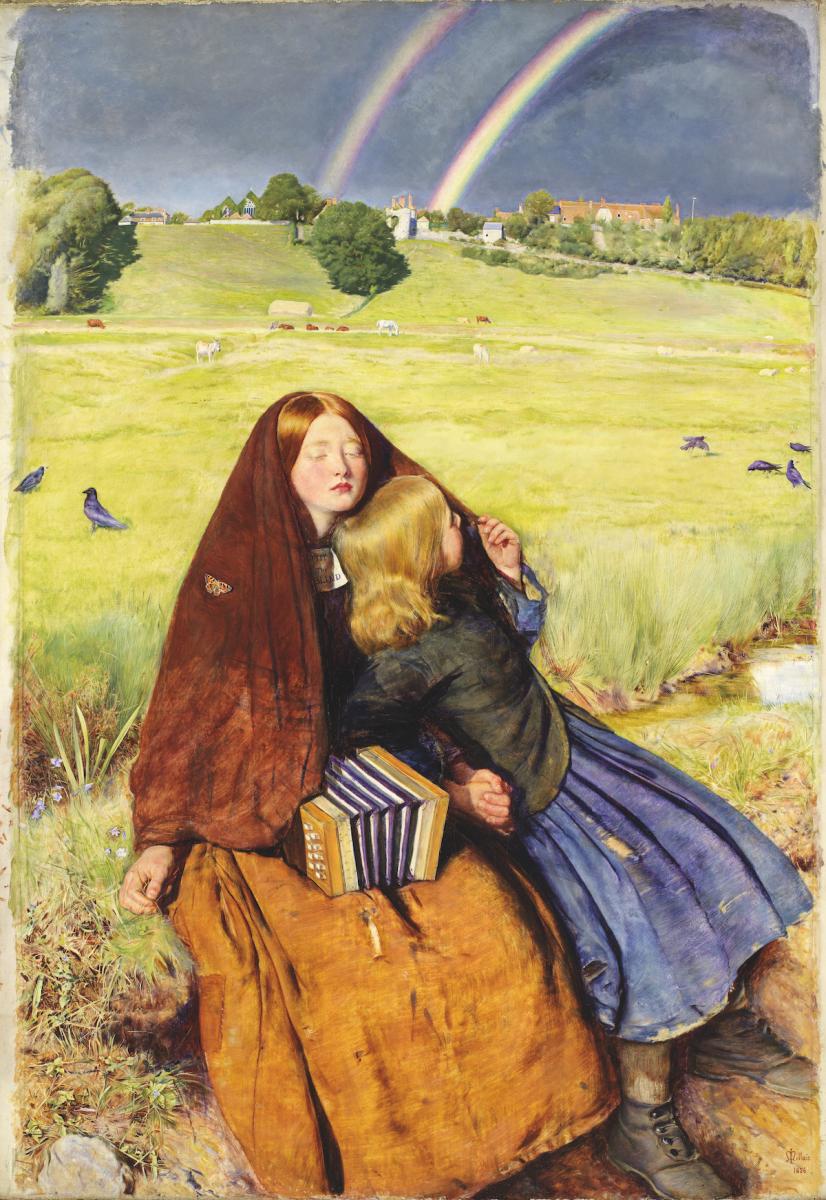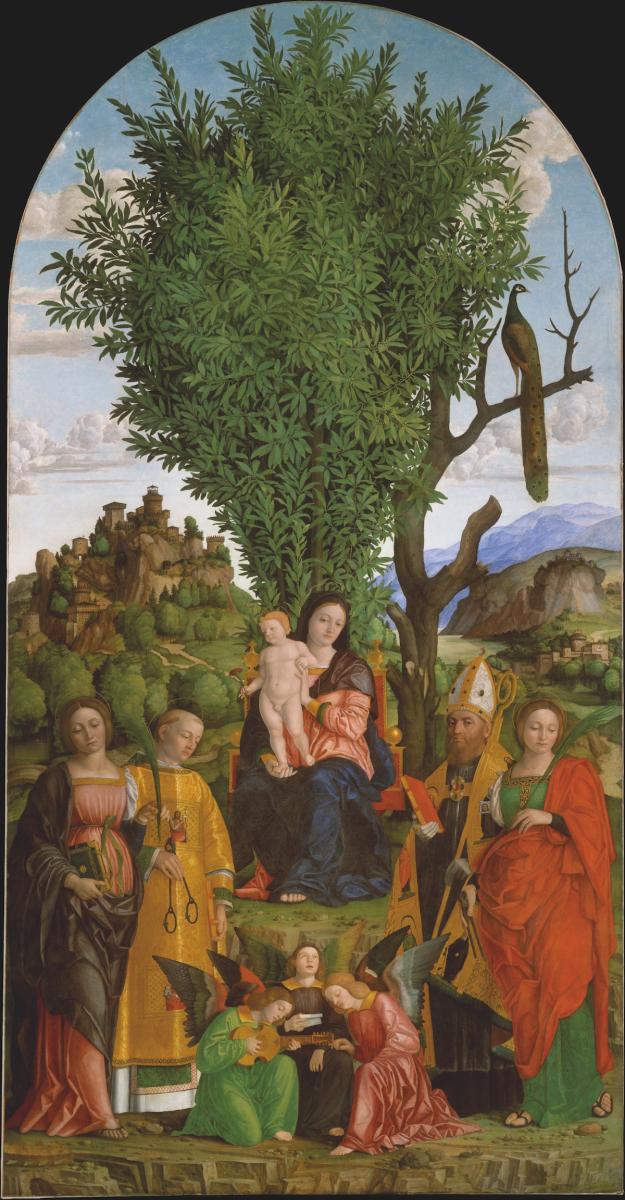This wonderful Cornish workshop and museum is dedicated to the legacy of studio pottery trailblazer Bernard Leach
What do rainbows, peacocks and doves mean in art?
What do rainbows, peacocks and doves mean in art?
13 Sep 2023
When we view an artwork, what do we actually see? Is a peacock, for example, purely for decoration? Interpret its meaning, says Matthew Wilson, and viewing becomes a revelatory experience
 Spot the peacock in The Origin of the Milky Way by Jacopo Tintoretto. Image: Google Art Project
Spot the peacock in The Origin of the Milky Way by Jacopo Tintoretto. Image: Google Art Project
On a visit to an art gallery our primary joy will be engaging with the beauty of the art, be it a stimulating effect of colour, the gracefulness of a brush mark, or an elegant orchestration of form.
But sometimes we are so beguiled, we overlook deeper meanings.
This is where a familiarity with the language of symbols in art can transform the experience of viewing.
Take for example, the rainbow…
 The Blind Girl by John Everett Millais, 1854–56. Image: Birmingham Museums Trust/CC
The Blind Girl by John Everett Millais, 1854–56. Image: Birmingham Museums Trust/CC
Follow the colours
There’s so much to beguile the eye in John Everett Millais’ The Blind Girl: the succinct composition, precise transcription of nature and the loving interaction between a young girl and her blind sister.
Then there is that double arc of rainbow.
If we consider the associations of rainbows with religion and the artist’s craft, there are hidden depths to this gorgeous artwork. In the book of Genesis, after the great flood, God painted the sky with a rainbow for Noah, making it a symbol of the reconciliation between humanity and the Almighty.
Older religions used the rainbow in similar ways.
To take one example, Iris, the messenger goddess of Greek mythology, had a rainbow as an attribute to show the connection of heaven and earth. Meanwhile, in texts on the art of painting, rainbows feature as symbols for nature’s skilful blending of colour and are an emblem of art itself, cited by theoreticians including Leonardo da Vinci.
With this in mind, we see Millais’ painting in an entirely new way. Our urge to help the poor is intensified by the rainbow’s allusion to biblical redemption, and the blind girl’s inability to behold the majesty and intricacy of colour is underscored by reference to the rainbow as a symbol of painting.
 Madonna and Child with Saints by Girolamo dai Libri, c.1520. Image: Fletcher Fund, 1920. Metropolitan Museum of Art, Online Collection
Madonna and Child with Saints by Girolamo dai Libri, c.1520. Image: Fletcher Fund, 1920. Metropolitan Museum of Art, Online Collection
Peacocks and superpowers
What about the peacock?
It is tempting to see the landscape, plant life and peacock in Girolamo dai Libri’s Madonna and Child with Saints as simply decorative embellishments, adding visual interest to the composition’s periphery.
But in Renaissance art, animals, plants and objects often have a secret double meaning.
Peacocks signify immortality – and here the presence of peafowl refers to Christ’s future resurrection and overcoming of death.
This association with immortality may stem from two things: the observation that peacock feathers preserve their colours for a long time, and the tenacity of certain fables about peacock flesh being impervious to decay.
The notion of the peacock as a supernatural bird has a widespread history.
The reverence of peafowl in the religions of the Indus Valley civilisations (which date to the fourth millennium BC) is believed to be drawn from the bird’s charismatic mating dance, which occurs around the time of the rainy season and was therefore linked to the rejuvenation of nature. To those observing, it was as if the bird had a direct line to the gods to bring fecundity back to the land.
Peacocks can also ingest poisonous insects, so they were seen as a symbol of purification. The birds were first introduced to the West in the second millennium BC and quickly became synonymous with wealth and exoticism. They had also long been linked to powerful deities like Hera, wife of Zeus.
Curiously, the link to regeneration has persisted through the centuries and across continents. Here, in this painting, Christ’s surmounting of death is further reinforced by the fact that the peacock is positioned on a dead tree.
What does the dove in Laurent Girardin’s The Trinity (c.1460) signify? Image: Creative Commons/Mr and Mrs William H Marlatt Fund
Special envoys
Doves are the messenger birds, gifted by nature with an acute homing sense.
In ancient religions and symbolism, we can see the dove as an icon of communication, dispatching information from the spiritual realm to the earthly. In two key moments in the Bible, doves have a starring role as envoys from above.
The first is when Noah sends one out from his ark and it returns with an olive branch, signifying the re-emergence of land. Thus, like the rainbow, it became a symbol of peace between God and man.
In 1949, the World Peace Congress selected an image of a dove by Picasso as its icon, so reinforcing the concept of the ‘dove of peace’ in popular culture.
It has spread across the globe, visible in all kinds of unexpected places, including the hologram on Visa debit and credit cards, which shows a dove with wings outstretched in flight.
The second biblical mention of the bird is in the Book of John, where the Holy Spirit is described as a dove descending during the baptism of Christ. Again, the bird is a messenger, but now in a more celestial role. This is how we can interpret the bird in Laurent Girardin’s The Trinity (c.1460), seen above. Placed above Christ on the cross – the ineffable spirit of God is being communicated to mankind.
Find out more!
For our full feature, see the summer issue of The Arts Society Magazine, out now and available exclusively to members and supporters of The Arts Society (to join, see theartssociety.org/member-benefits)
About the Author
Matthew Wilson
is a teacher, Arts Society Accredited Lecturer and writer whose work has featured in The Spectator and The Economist and on the BBC Culture website. His latest book, The Hidden Language of Symbols, is published by Thames & Hudson
JOIN OUR MAILING LIST
Become an instant expert!
Find out more about the arts by becoming a Supporter of The Arts Society.
For just £20 a year you will receive invitations to exclusive member events and courses, special offers and concessions, our regular newsletter and our beautiful arts magazine, full of news, views, events and artist profiles.
FIND YOUR NEAREST SOCIETY
MORE FEATURES
Ever wanted to write a crime novel? As Britain’s annual crime writing festival opens, we uncover some top leads
It’s just 10 days until the Summer Olympic Games open in Paris. To mark the moment, Simon Inglis reveals how art and design play a key part in this, the world’s most spectacular multi-sport competition



